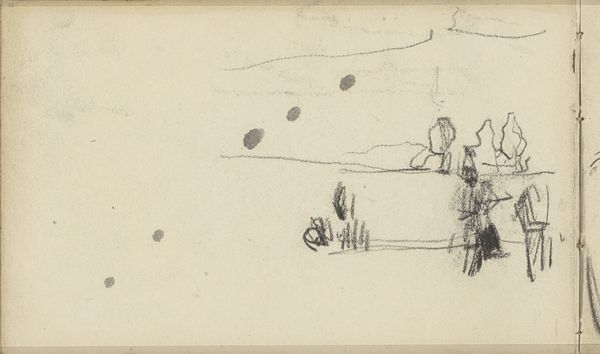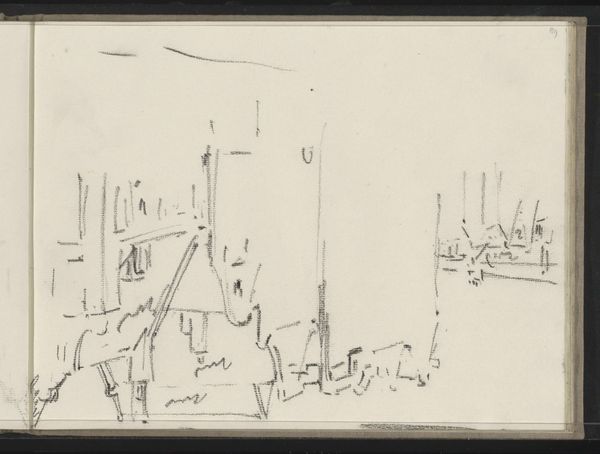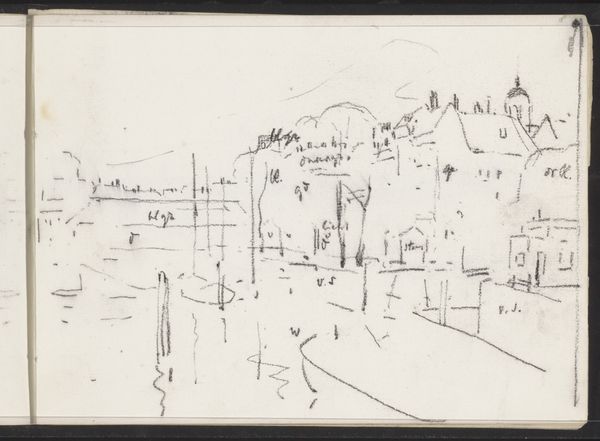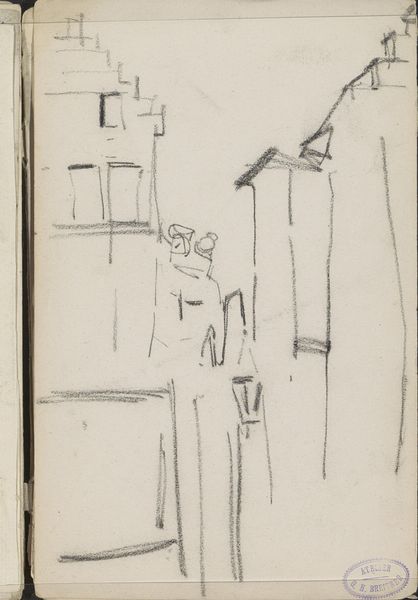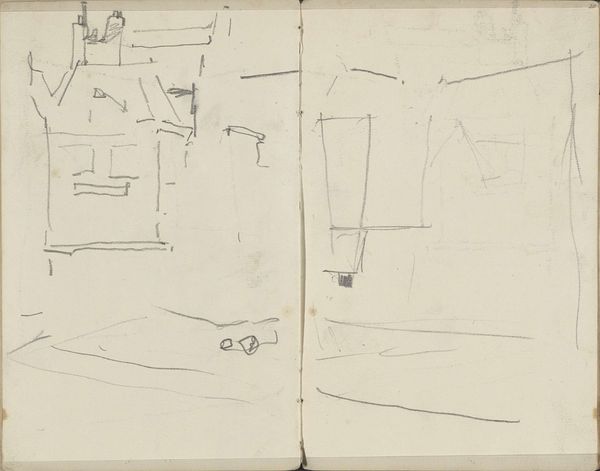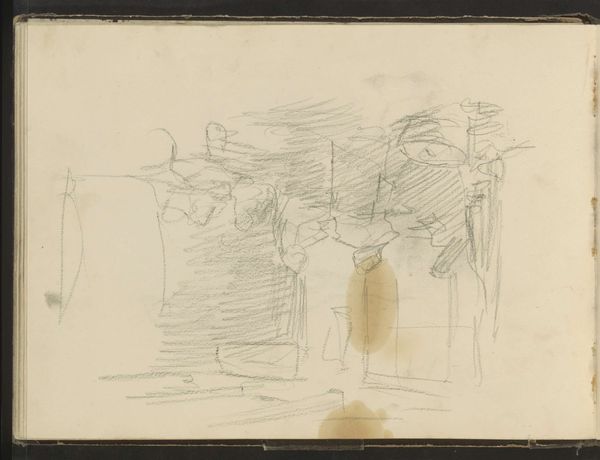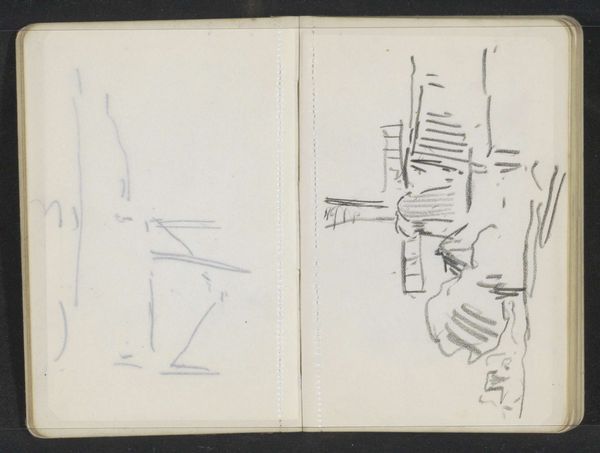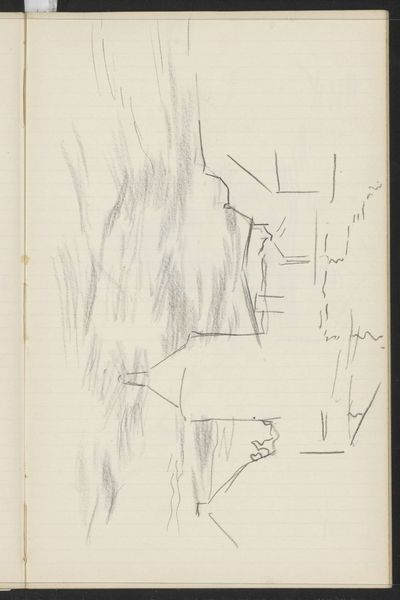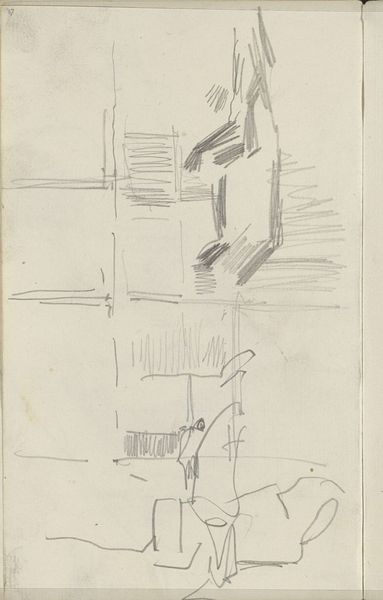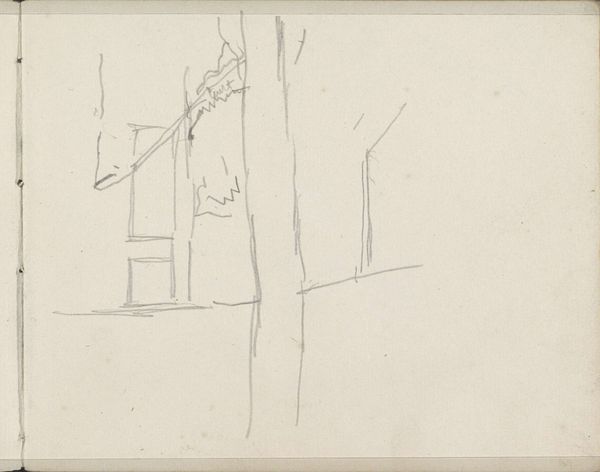
#
quirky sketch
#
pen sketch
#
sketch book
#
incomplete sketchy
#
personal sketchbook
#
ink drawing experimentation
#
pen-ink sketch
#
sketchbook drawing
#
sketchbook art
#
fantasy sketch
Copyright: Rijks Museum: Open Domain
Curator: Let’s turn our attention to "Vrouw met een omslagdoek voor een gebouw," or "Woman with a shawl in front of a building," a pen and ink sketch by Willem Witsen, created around 1897-1898. It is currently held here at the Rijksmuseum. Editor: It possesses a captivating rawness, doesn't it? The quick, almost frantic lines create a sense of immediacy and even vulnerability. The stark contrast accentuates the solitary figure. Curator: Indeed. Witsen, entrenched in the context of late 19th-century urbanism, often explored themes of isolation within the burgeoning metropolis. Consider how the woman’s concealed features and modest attire could reflect the limited social mobility and power dynamics of women during that period. Editor: I observe how the minimal use of lines still communicates volume. It really hinges on the strategic placement of the shawl’s dark strokes, achieving shape without laborious shading. Curator: Furthermore, look at how the structure looms over the woman; this isn’t merely architectural detail. The severe geometry might symbolize institutional dominance, overshadowing the individual's agency. The shawl acts almost as a form of protection, a shield against that structure's implied force. We might interpret it as representative of both refuge and confinement within social norms. Editor: Yet the sketch itself pushes against restraint through Witsen's gestural strokes. Look how quickly he captured a moment in a sort of dance on the page! The water stains add a layer of randomness and age. Curator: Absolutely. In this particular intersection, the visual form underscores the deeper issues—gendered constraints and the social implications. Editor: Considering Witsen’s economy of means, this piece encourages us to consider the interplay between intention and effect. What seems haphazard in its execution becomes rather revealing when explored under deeper inspection. Curator: I appreciate how your observation prompts us to really engage with what might otherwise seem like just a simple sketch. Hopefully we gave others here cause for the same reflection. Editor: Hopefully so. It’s a subtle yet affecting sketch, and its power lies within that suggestion.
Comments
No comments
Be the first to comment and join the conversation on the ultimate creative platform.

